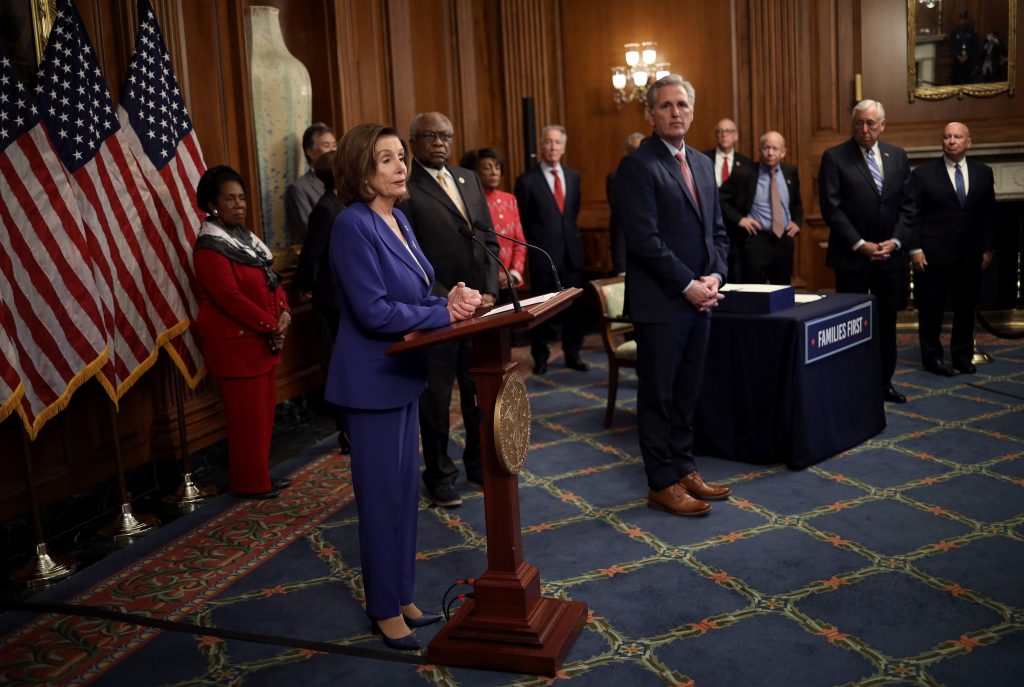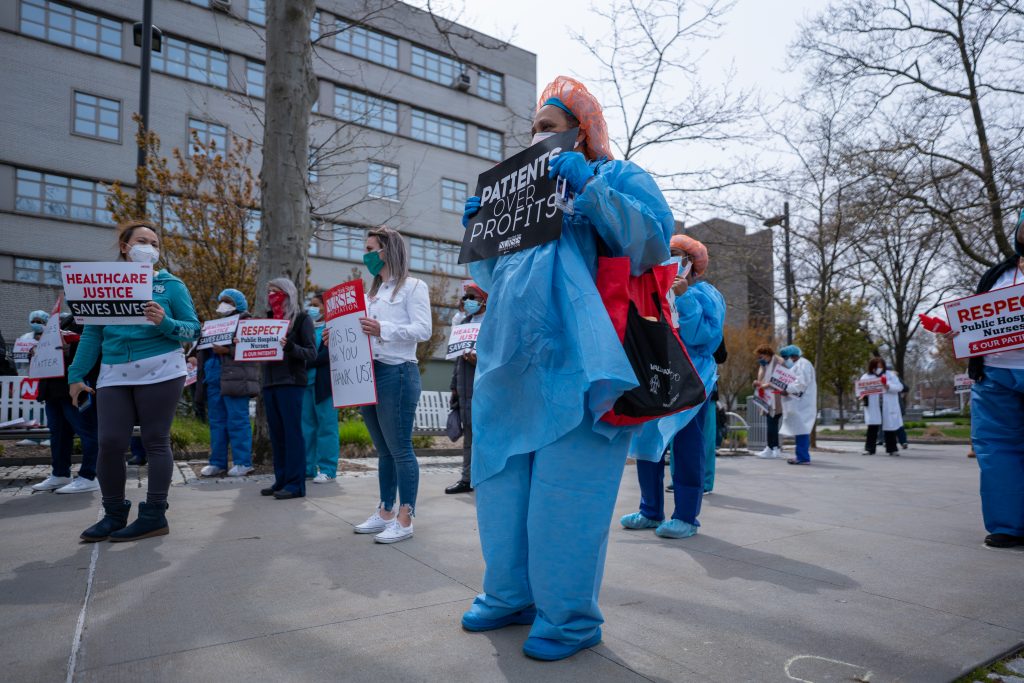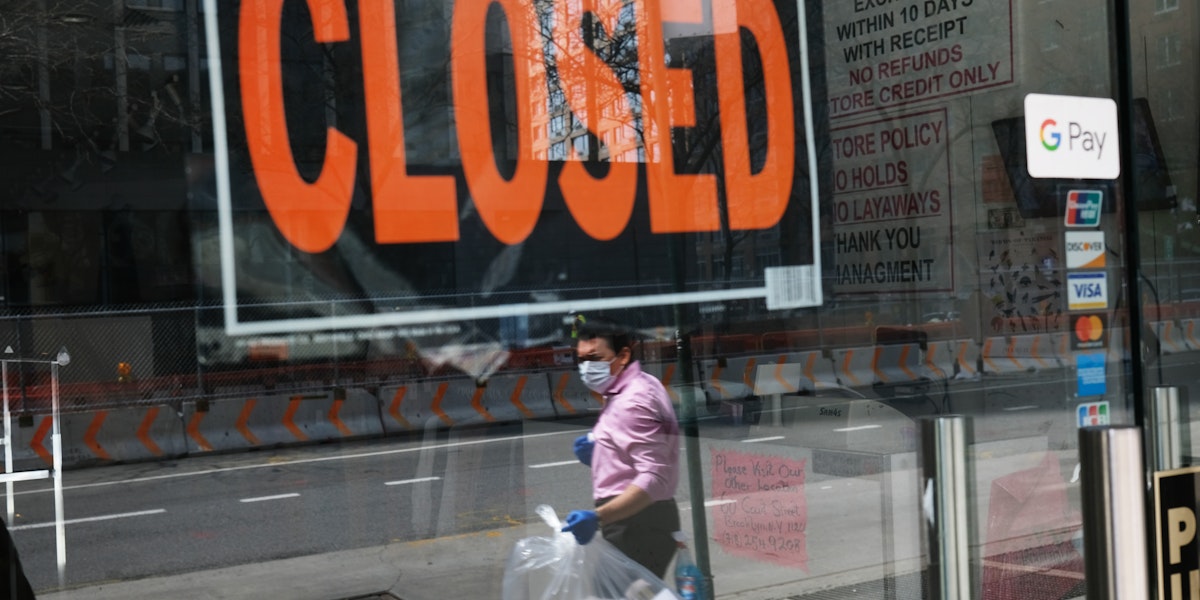More than 10 million independent contractors1 work in the United States. Some choose consulting or self-employment because it gives them autonomy and flexibility. Often, however, they have no choice because they cannot find the type of employment they want. Many are misclassified and should rightfully be identified and treated as employees. One thing they all have in common is limits or gaps in the workplace protections and benefits that many employees typically enjoy, such as health insurance, unemployment insurance, paid sick days or paid time to care, retirement security, workers compensation, and life insurance.
The precariousness of independent contractors’ lack of economic security and personal health and safety benefits has always been challenging under what was once considered “normal” circumstances. Unfortunately, independent contractor positions are often the only jobs available to people whom our economic structures already disfavor: women, people of color, and people in low-paying industries. For one example among many, Black and Latinx workers are often wrongly classified as independent contractors2 at app-based “gig” jobs at Handy and Uber, and thus working without much of a safety net. In the midst of the COVID-19 pandemic, the lack of benefits and protections for independent contractors has become critical, not only threatening them with economic peril, but also forcing many of them to make the choice between keeping their jobs or protecting their lives.
Some independent contractors are considered essential workers right now. Whether they are working through Instacart to deliver groceries, or are paramedics working directly on patients, they are all going to work, putting their health—and that of their family members—at risk without the security of health insurance or workers compensation if they get sick. They also have no solutions to the lack of child care now that so many schools and child care programs are closed. Other independent contractors are out of work because of the pandemic. House cleaners, for example, have been asked to (or have themselves chosen to) stay home to keep everyone safe; those working in gig jobs from ports to travel related industries;3 and those self-employed in the beauty and wellness industries cannot safely work with clients right now.
Many independent contractors also have multiple hiring entities, nontraditional hours, and fluctuating income levels that need to be taken into account when developing policy solutions. When independent contractors are included in policies, they often face additional burdens, such as having to pay both the employer and employee side of payroll taxes for Social Security and the like—an extra expense, on top of having to pay for things such as their own health insurance.
The COVID-19 virus is not discriminating based on job type, and our public policies must not either.
As policymakers work toward saving and protecting Americans from the damage being wrought by this pandemic, no one should be left behind because of their worker classification, regardless of whether they are deemed “essential,” have the ability to work and are choosing to, or have lost work as a result of the need to shelter in place and stay safe. We need collective responses for the good of the community. The COVID-19 virus is not discriminating based on job type, and our public policies must not either.
This report analyzes seven key areas of concern—worker misclassification, health coverage, paid leave, unemployment insurance, paycheck protection, cash assistance, and nutrition assistance—and lays out how independent contractors can access the relief that Congress has passed to date in the Families First Coronavirus Response Act4 (FFCRA) and the CARES Act,5 as well as what else is needed.
Misclassification
Before digging into the relief available to independent contractors, it’s important to note that there are many workers who have been misclassified as independent contractors by their employers, when they are really employees, and thus should be eligible for the same supports and benefits as other employees. For example, advocates have argued that many of those in the gig economy ought to be already getting regular unemployment benefits, paid for by the app platforms or hiring entities that employ them. Depending on the state, as many as 11 percent to 30 percent of employers6 misclassify at least part of their workforce as independent contractors. Companies can save up to 30 percent in pay, taxes, and benefit payments per individual7 by paying them as contractors not employees. Some states are tightening laws and regulations to stop employers from misclassifying their employees. For example, California passed a law last year to declare app drivers employees of the platforms that profit from them, and Uber and Lyft drivers have won court cases in states such as New York and Pennsylvania acknowledging that the drivers are employees.
The new benefits offered by the congressional relief packages should not deter states from pursuing tighter rules on platform companies who exert tight control over those who toil for their platforms and other hiring entities who misclassify their workers. States should help workers in the quickest way possible while not conceding their enforcement efforts.
Health Coverage
At a time when everyone needs access to COVID testing, preventive health care, and treatment, independent contractors are at risk of being left behind. As noted above, independent contractors are unlikely to have health insurance through their jobs. As a result, they must rely on individually purchased insurance, insurance through another family member, or public health insurance such as Medicaid; or, as is too often the case, they go uninsured.
At a time when everyone needs access to COVID testing, preventive health care, and treatment, independent contractors are at risk of being left behind.
The government has an important role to play to fix this. In the fourteen states that have not expanded8 Medicaid to cover people earning under 138 percent of the federal poverty level (about $17,600 for an individual, and about $30,000 for a family of three), workers in that income bracket may have no feasible coverage options (unless they qualify under far narrower “categorical eligibility” requirements for the program, such as a low-earnings worker who is in deep poverty and also pregnant). Many independent contractors will likely fall into an income bracket that puts them in this coverage gap; one survey9 found that Uber drivers, for example, are paid an hourly wage of $11.77 per hour. In too many cases, those that have purchased insurance may well find out that their health coverage doesn’t actually cover costs related to the pandemic, because they turned to the kind of “junk insurance” that the Trump Administration recently blessed through its short-term limited duration plan rule.10 Some workers who are currently insured may earn enough to put them above 138 percent of the poverty level, and qualify for discounts on the Obamacare exchanges. However, uninsured people who would otherwise qualify for those discounts may not be able to access them right now: unless a gig worker lost job-based health insurance (for example, when a spouse who had an employer-provided family plan lost a job), they will not have the option of enrolling in discounted insurance through the Affordable Care Act (ACA) exchanges until open enrollment next fall, unless they are lucky enough to live in one of the few states that runs its own exchanges and has opened up enrollment.
Congressional Action to Date: Health
The Families First Coronavirus Response Act (FFCRA)11 took some initial steps that will benefit some independent contractors. FFCRA shores up existing Medicaid funding by temporarily increasing the federal medical assistance percentage (FMAP), meaning that states get some additional help covering Medicaid enrollees. This change may reduce state incentives to restrict enrollment growth; the law also requires that states do not disenroll people already enrolled in the program.

The CARES Act12 took some additional steps by covering COVID-19 testing costs for uninsured people through the federal National Disaster Medical System, although Congress should still clarify that providers cannot then bill patients for additional cost-sharing. The Trump administration has stated that hospitals receiving bailouts cannot send uninsured patients “surprise bills,” but that requirement is not comprehensive13 across providers. Finally, the CARES Act also sends additional dollars to state and local budgets, which may directly or indirectly help cover the costs in providing COVID-19 related safety net services to people.
Additional Action Needed: Health
There is far more work to do.14 Congress should provide free treatment for COVID-19 related services, including mental health services, as well as future vaccines. For independent contractors, this means adjusting any relevant cost-sharing requirements in public health insurance programs and providing a broader range of free treatment for uninsured people through either the Medicaid program or the National Disaster Medical System.
Beyond COVID-19-specific costs, uninsured workers will be in far more dire economic straits than ever before due to the economic downturn, and Congress must expand enrollment in public and subsidized private coverage in three ways. First, it can do more to incent states to expand Medicaid by upping the amount15 of money the federal government provides in covering program costs in the first few years. Second, it can require the Department of Health and Human Services (HHS) to open up a special enrollment period on healthcare.gov to allow workers to sign up for coverage. Workers earning between 133 percent and 400 percent of the federal poverty level qualify for discounts that bring down the cost of premiums, and the discounts are particularly significant for the lowest-income workers. Most states that run their own health care exchanges have already created a special enrollment period for COVID-19. Finally, the federal government can further increase the federal dollars16 (via adjustments to FMAP) going to states for their Medicaid programs to anticipate the uptick in Medicaid enrollment, ensuring that states do not begin limiting enrollment in the face of greater need.
The Affordable Care Act provides a much broader safety net for uninsured workers than we have had in any previous recession, but the challenges facing independent contractors in the wake of COVID-19 highlight the need for additional future systemic reforms. Even given the limitations of the Supreme Court’s NFIB v. Sebelius ruling, which converted the Medicaid expansion from mandatory to optional for states, Congress can be more aggressive17 in closing the Medicaid gap facing more than 2 million workers in fourteen states. Additionally, Democrats in Congress have nine different versions of a public coverage expansion18—through Medicaid, Medicare, or otherwise—and the affordability challenges facing independent contractors more broadly underscore the need for that kind of bold action.
Paid Leave
The United States is one of the few nations without a national paid leave policy, to guarantee workers paid time off to care for one’s health or one’s family members. Eight states and Washington, D.C. have paid family and medical leave policies in place19 (or about to be implemented), and in seven of those programs, self-employed people can opt-in. In Massachusetts, some self-employed people are automatically covered. Meanwhile, eleven states and Washington, D.C.20 (and many cities) have paid sick leave policies in place, but they don’t cover self-employed people.21
The COVID-19 pandemic has made it clear just what a disaster it is not to have national policies in place.22 Paid leave would have made it easier for people to stay home confidently, without worrying about their paycheck or job, thus slowing the spread of the virus and saving lives. These policies are necessary so that people can take the time they need for testing and quarantines without sacrificing their financial security and wellbeing. And, with so many schools and child care programs closed for safety, paid leave allows parents to stay home with their children if schools or child care centers close for public health reasons.
Congressional Action to Date: Paid Leave
The good news is that the FFCRA23 included emergency paid sick days and emergency paid family and medical leave policies to ensure that people can stay home to stop the spread of the virus and care for themselves and their families—without sacrificing their financial security. The provisions aim to compensate covered self-employed workers for time they are not working for coronavirus-related reasons, paralleling provisions providing covered employees24 with the right to paid time off in the same situations. For self-employed workers, the compensation comes in the form of advanced refundable tax credits. This provision of the law covers all types of self-employment that are subject to federal self-employment tax.
The FFCRA creates tax credits for two new types of paid leave: emergency paid sick leave and emergency paid family leave. For both, self-employed workers will calculate their average daily income by taking their self-employment income for the taxable year and dividing by 260 (the number of non-weekend days in a year) and use this rate to calculate their tax credit, up to caps set by law.
Self-employed workers can receive tax credits for up to ten days of emergency paid sick leave. These credits cover days when workers cannot work for their own health because they are subject to a quarantine or isolation order (including a shelter-in-place or similar order), have been advised by a medical provider to self-quarantine, or are experiencing coronavirus symptoms and seeking medical diagnosis. They also cover days when workers cannot work because they have to care for certain loved ones who are subject to a quarantine or isolation order or have been advised to self quarantine, or to care for their child whose school or daycare is closed (or childcare provider is unavailable) due to coronavirus. The amount of the credit depends on the reason for the inability to work. For leave to protect the worker’s own health, the per-day credit is 100 percent of the worker’s average daily self-employment income up to $511 per day; for care of others (including childcare), it is 67 percent of the worker’s average daily income up to $200 per day.

The emergency paid family leave credit, in contrast, is narrower in scope but longer in duration. Emergency paid family leave credits only cover inability to work because the worker had to care for their child whose school or daycare is closed (or childcare provider is unavailable) due to coronavirus. Self-employed workers can receive tax credits for up to fifty days (the equivalent of ten five-day workweeks) of emergency family leave, in addition to any tax credits received for emergency paid sick leave (regardless of the reason for which emergency paid sick leave was taken). For emergency paid family leave, the per-day credit is 67 percent of the worker’s average daily income up to $200 per day ($10,000 total).
These credits are available only for days self-employed workers were unable to work for a qualifying reason between April 1, 2020 and December 30, 2020, again paralleling the period of time in which covered employees can take leave under the law. According to the IRS FAQs,25 self-employed workers can reduce their estimated income tax payments by taking into account the amount of the anticipated tax credit, in effect providing funds to pay for the leave. The credits can be claimed for 2020 taxes and workers may need to provide documentation to support the credit. Those who are combining self-employment income with traditional W2 employment should be aware that any emergency paid sick leave or emergency paid family leave they receive from their employer(s) under their FFCRA may count against their tax credits.
Additional Action Needed: Paid Leave
Unfortunately, as a result of negotiations and problematic regulations that the Department of Labor put out interpreting the law too broadly, too many people were excluded from the emergency paid leave provisions.26 The nation needs laws that reflect the provisions of the PAID Leave Act, S. 3513,27 with a priority on covering all workers, regardless of the size or type of their employer.28 In addition, emergency leave provisions need to be expanded to include care for every kind of family and all of the possible COVID-related reasons people will need paid leave during this crisis. Further, independent contractors—and all workers, and those who hire them—need education and outreach about new laws and the rules implementing them. There must also be funding for compliance assistance and enforcement to protect workers, including independent contractors. Finally, independent contractors—and all workers—need permanent, national paid family and medical leave policies, as well as paid sick leave policies that include them.
Unemployment Insurance
The United States is in the thralls of a devastating jobs crisis. COVID-related unemployment is skyrocketing past projected highs, as one in seven workers have filed for unemployment benefits since businesses started shuttering in mid-March. As noted above, the unemployment insurance (UI) system does not typically provide a safety net for independent contractors. Advocates have worked hard to change that, and it’s critical for state and federal policy makers to capitalize on recent events and legislation to cover as many displaced independent contractors as possible.
Congressional Action to Date: Unemployment Insurance
The CARES Act established the Pandemic Unemployment Assistance (PUA) program, which is emergency unemployment assistance for workers who are ineligible for regular unemployment insurance. This includes self-employed workers, including independent contractors, freelancers, workers seeking part-time work, and workers who do not have a long-enough work history to qualify for state UI benefits. The Pandemic Unemployment Assistance can provide up to thirty-nine weeks of benefits, and PUA recipients will be eligible for a standard unemployment benefit and an additional $600 per week meant to approximate full-earnings replacement for middle and low-income Americans displaced by COVID-19.
Additional Action Needed: Unemployment Insurance
While many in Congress declared their desire to provide equal access to unemployment benefits for independent contractors, there are major differences between Pandemic Unemployment Assistance and standard unemployment benefits, and actions that states and the U.S. Department of Labor could take to narrow the gap between them.
When it comes to standard unemployment, any worker who is out of work is eligible for a standard check and the $600 per week relief boost. However, when it comes to PUA, individuals can only receive aid if they are unemployed because of COVID-19. The specific reasons include individuals who themselves have contracted COVID-19, are caring for a family member who is ill with COVID-19, are forced out of work because their kids schools are closed, have had their place of employment closed because of COVID-19 or because they have been subject to quarantine. This definition leaves out self-employed workers and gig workers losing work because of the sharp general decline in economic activity, if they can’t trace their unemployment to one of these reasons.
The U.S. Department of Labor has issued regulations defining the various scenarios contemplated by the law, but its initial rules took a narrow view of PUA.29 While the rules explicitly mention those who labor through apps such as Uber or Lyft, it only extends PUA to those who are “forced to suspend operations” because of a COVID19 public health order. That leaves those who could still turn their apps on, even if they get less work than before, in a gray area when it comes to how states will process their unemployment claims. PUA eligibility will be an even bigger stretch for those who stop working for one of the busy delivery platforms such as Postmates, Doordash, or Instacart because they are worried about getting sick, unless they have a compelling medical reason (and preferably a doctor’s note) to do so.

The implementation of these rules will largely fall on the states who were given some leeway to decide on individual cases. Thirty-four U.S. senators called on the U.S. Department of Labor to clarify that any app-employed drivers subject to stay-at-home orders should be eligible for Pandemic Unemployment Assistance.30 Already, the U.S. Department of Labor has told reporters that gig workers could qualify if public health orders have “made operations unsustainable,”31 and it will be up to states, advocates, and gig workers themselves to push for stronger coverage. Moreover, the Department of Labor should clarify to states that those who are medically at risk to COVID-19 and for whom continued gig work would subject them to exposure should be able to access these benefits whether or not they can get a doctor’s note, as they have told the press.32 The logical step is for the Department of Labor to quickly issue a change to Unemployment Insurance Program Letter 16-20 to clarify its initial statements.33
One reason that the Department of Labor has interpreted the CARES Act so narrowly is that Congress directly linked this new program to Disaster Unemployment Assistance. Congress should rethink that connection, particularly that only allows benefits when unemployment is a direct result of a disaster and not a “longer chain of events precipitated or exacerbated by the disaster.”34 These rules, put in place to prevent 9-11 benefits from going to taxi drivers and others thrown out of self-employment by the economic reverberations of the terrorist attacks,35 could keep many freelancers who have been dislodged by the economic shutdown out of benefits today.
When standard workers file for unemployment benefits, their claim and their weekly benefit amount is determined by wage records submitted to states on a quarterly basis. When it comes to proving their earnings, standard workers simply need to point and click at the appropriate employer that pops up in their work history on their state UI webpage, and then the state calculates an unemployment benefit amount that is roughly half of their average pay check. In contrast, independent contractors filing pandemic unemployment assistance would typically get the minimum benefit established for the disaster unemployment assistance program (the predecessor of pandemic benefits), until they are able to provide proof of their self-employment earnings. If such proof (in the form of tax returns, IRS 1099 forms, or app records) does not arrive at the state agency within twenty-one days, independent contractors could lose access to pandemic unemployment assistance altogether.
The documentation requirements for independent contractors should be changed during the COVID-19 pandemic, given the extreme pressure on states to process claims quickly, matching the ninety-day limit given during Hurricane Sandy. States should be able to give their claimants extra time to send in documentation, and they should be allowed to use that information to simply verify eligibility rather than re-calculating a benefit amount.
In addition, state unemployment websites and phone lines currently are overwhelmed by unprecedented levels of demand caused by COVID-19, as 16.7 million individuals have filed unemployment claims during the three- week period between March 21 and April 3. Still, standard workers can get their claims in the queue and payments are starting to come out. As of the week of April 14, states were just in the process of beginning to set up and take applications for independent contractors, and even the best states are unlikely to deliver benefits before May.
Paycheck Protection Program
As companies close to abide by shelter-in-place and essential-worker-only orders and keep people safe, many people are losing their jobs. The Paycheck Protection Program incentivizes small businesses to maintain employment by providing loans that can be forgiven if payrolls are maintained throughout the crisis. However the rollout and rules of the program have been confusing, its funding has been insufficient, and many businesses—and workers—are falling through the cracks.
Congressional Action to Date: Paycheck Protection Program
The CARES Act establishes a $350 billion funding source for low-interest small business loans,36 under a program called the Paycheck Protection Program. Sole proprietors, independent contractors, and self-employed individuals are eligible for the loans, which can amount to up to 2.5 times the borrower’s average monthly payroll costs, and may be forgiven if their workers are kept on payroll or rehired after business resumes. For independent contractors, the formula is based on all personal wages, commissions, or other earnings, during a twelve-week period in early 2019—a timeframe that may leave some newly independent workers out.
The CARES Act establishes a $350 billion funding source for low-interest small business loans under a program called the Paycheck Protection Program.
Although independent contractors are eligible, since the $350 billion is being distributed at a first come, first serve basis, it may be more difficult or impossible for them to get funding—the date for initially applying for the loan for them is April 10, whereas other small business owners, including sole proprietors, could apply starting April 3.
Additional Action Needed: Paycheck Protection Program
Main Street Alliance, a major advocate for small businesses in America, has said it best: “Without added and expansive federal action to preserve our small business economy, Main Street will wither, and Wall Street will seize an even greater share of our economy.” One such action the federal government should take is to pass the Paycheck Guarantee Act,37 which would provide grant funding, instead of loans, to any businesses or independent contractors that maintain payrolls. This would eliminate uncertainty about eligibility and any fear of not being able to pay back a loan or receive forgiveness.
Furthermore, because the loss of income will fall heavily on independent contractors who are women, people of color, and people in low-paying industries in rolling out such a program, state and local governments must have clear guidance on how to ensure effective and universal recipiency among communities of color and other disadvantaged groups.
Cash Assistance
Over the past month, the number of people losing their jobs and income has skyrocketed into the tens of millions. At this rate, a significant portion of the workforce will no longer be able to pay their rent, or keep food on the table. For many independent contractors, who have little in terms of a safety net, the fallout of this pandemic will be catastrophic, and their collapse will ripple further out through the economy. Direct cash assistance is one of the easiest, most efficient ways to reduce the harm to the economy.
Congressional Action to Date: Cash Assistance
The CARES Act created the Economic Impact Payments program to provide a one-time payment of up to $1,200 for individuals, $2,400 for married couples, and up to $500 for each qualifying child.38 Anyone who filed taxes in 2018 or 2019 and meets the income thresholds will receive cash assistance under the program. Independent contractors with adjusted gross income up to $75,000 for individuals and up to $150,000 for married couples filing joint returns will receive the full payment. For filers with income above those amounts, the payment amount is reduced by $5 for each $100 above the $75,000/$150,000 thresholds. Single filers with income exceeding $99,000 and $198,000 for joint filers with no children are not eligible.
Additional Action Needed: Cash Assistance
The economic impact payments are a helpful start, but a single payment of $1,200 is simply not enough to keep families or individuals housed, fed, and sustained. In addition, the Economic Impact Payments program excludes those who file taxes with an individual taxpayer identification number. Any future package must include all Americans and provide assistance on an ongoing basis.
Nutrition Assistance
Nutrition assistance programs are the first line of defense against hunger. They are also important antipoverty tools. Unlike unemployment insurance, most nutrition programs have been a safety net accessible to independent workers, as eligibility is tied to income and not to how they are employed. The largest of these programs, the Supplemental Nutrition Assistance Program (SNAP), served 35 million people in 2019 and plays a critical role in providing nutritional support to and improving nutritional outcomes of low-wage working people and families, including independent contractors.39 It’s a highly efficient and effective program, targeted to the people who need it most—about 92 percent of recipients are at or below the poverty line—and lifts millions of people out of poverty every year.40 Families receiving SNAP see long-term benefits in children’s outcomes in high school graduation, health, and economic self-sufficiency.41 As the pandemic hits low-wage and low-income workers the hardest, SNAP responds quickly and effectively to support these groups who find themselves out of work and with reduced incomes. Other programs, such as the National School Lunch and Breakfast programs and Emergency Food Assistance Program, alleviate food insecurity and financial hardship by supplementing diets, helping families buy food, and freeing up resources to pay for other essentials.
Congressional Action to Date: Nutrition Assistance
The FFCRA provided additional funding to nutrition programs, including SNAP, Special Supplemental Nutrition Program for Women, Infants, and Children (WIC), and the Emergency Food Assistance Program (TEFAP). These programs are designed to quickly respond to rising food needs; SNAP is an especially effective recessionary safety net, helping low-income and unemployed people and boosting the economy as the benefits are quickly sent, disbursed, and spent. Unlike unemployment insurance, the self-employed can typically get SNAP benefits if their incomes are very low or even temporarily down to zero. However, the self-employed typically face major hurdles in providing evidence of their incomes, especially if they are seeking benefits as working-age adults (not just for their children) and are required to participate in a minimum of 80 hours per month in work activities.
The package strengthens states’ ability to address rising food needs and administrative demands through broad, temporary flexibility and authority to supplement and adapt nutrition programs. The Act will ensure that independent contractors who qualify because they have lost income or hours can access food assistance, including by suspending work requirements and the three-month limit on SNAP benefits for able-bodied adults without dependents. Many workers may be newly eligible or qualify for SNAP if they were previously disqualified due to the time limit. This temporary suspension lasts through the full month after the U.S. Department of Health and Human Services lifts the public health emergency. In addition, the U.S. Department of Agriculture has new flexibility to approve state plans to provide emergency SNAP benefits, providing SNAP-participating households that lose income with supplemental benefits up to the maximum benefit a household can get for up to two months. Finally, the FFCRA provides new state authority to grant SNAP benefits (Pandemic EBT, or P-EBT) to households with children affected by school closures who would have otherwise received free or reduced-price meals.
In addition to these provisions, easing of reporting requirements and the application process will grant greater access to nutrition benefits to many independent contractors and other workers who have lost their jobs or income. Most states have taken up these new flexibilities.42
Additional Actions Needed: Nutrition Assistance
The current relief packages intend to address the short-term health emergency but not the broader, longer-term economic crisis. The CARES Act does not expand SNAP benefits—it only appropriates funding to pay for rising caseloads—which advocates and congressional leaders are pushing for in the next package. While the FFCRA provides short-term benefit increases and temporary suspension of work requirements to SNAP, the economic downturn will likely endure beyond the pandemic and longer-term provisions for nutrition assistance, such as a SNAP-based stimulus expanding eligibility and benefits—similar to the one in the 2009 Recovery Act—may be helpful.43 Speaker of the House Nancy Pelosi has called for a 15 percent increase in SNAP benefits to boost the food spending power of low-income families during the COVID-19 crisis. This is especially important, as typical SNAP benefits don’t cover a family’s entire monthly food budget. With the major delays in unemployment assistance for independent contractors, SNAP increases are especially important for helping families get food on the table. The Trump administration also has three regulations coming down the pipe that would contract SNAP eligibility and benefits for millions of Americans;44 implementation of such changes would also challenge our ability to boost economic demand and help workers back onto their feet.
Looking Ahead
We are in an unprecedented moment. We must prioritize public health alongside economic relief and recovery efforts. The next response package from Congress must include more equitable, comprehensive support that addresses the unique needs of independent contractors. States are also taking action right now to implement federal policies and directly help their residents, and state leaders should similarly consider how to cover everyone regardless of their job type, classification, or citizenship.45
The independence of the independent contractor often leaves them on their own. This crisis requires that we recognize our interdependence and come together with collective solutions that serve everyone.
header photo: A closed sign is displayed in the window of a business in a nearly deserted lower Manhattan in New York City. Source: Spencer Platt/Getty Images
Notes
- This report uses “independent contractor” and “self-employed” interchangeably. Bureau of Labor Statistics, Contingent and Alternative Employment Arrangements—May 2017, June 2018.
- Rebecca Smith, “Independent Contractors and COVID-19: Working without Protections,” National Employment Law Project, March 24, 2020, https://www.nelp.org/publication/independent-contractors-covid-19-working-without-protections/.
- Abha Bhattarai, Heather Long, and Rachel Siegel “The first U.S. layoffs from the coronavirus are here,” Washington Post, March 11, 2020, https://www.washingtonpost.com/business/2020/03/11/layoffs-coronavirus/.
- United States Congress, H.R.6201—Families First Coronavirus Response Act, March 11, 2020.
- United States Congress, H.R.748—CARES Act, March 27, 2020.
- United States Department of Labor, Independent Contractors: Prevalence and Implications for Unemployment Insurance Programs, February 2000.
- Andrew Stettner, “California Takes On the Gig Economy and the Epidemic of Worker Misclassification,” The Century Foundation, September 10, 2019.
- Kaiser Family Foundation, “Status of State Action on the Medicaid Expansion Decision: Interactive Map,” March 13, 2020.
- Lawrence Mishel, “Uber and the labor market,” Economic Policy Institute, May 15, 2018.
- Katie Keith, “The Short-Term, Limited-Duration Coverage Final Rule: The Background, The Content, And What Could Come Next,” Health Affairs, August 1, 2018.
- United States Congress, H.R.6201—Families First Coronavirus Response Act, March 11, 2020.
- United States Congress, H.R.748—CARES Act, March 27, 2020.
- Christen Young et. al, “Responding to COVID-19: Using the CARES Act’s Hospital Fund to Help the Uninsured, Achieve Other Goals,” Health Affairs, April 11, 2020.
- Jen Mishory, “Health Coverage and COVID-19: CARES Act Leaves a Lot Riding on Phase 4,” The Century Foundation, March 31, 2020.
- United States Congress, H.R.585—SAME Act of 2019, February 27, 2019.
- Jennifer Sullivan, “Medicaid Funding Boost for States Can’t Wait,” Center on Budget Policy and Priorities, March 12, 2020.
- Jeanne Lambrew and Jen Mishory, “Closing the Medicaid Coverage Gap,” The Century Foundation, July 31, 2018.
- Jen Mishory, “How Proposals for Public Health Care Plans Differ: December 2019 Update,” The Century Foundation, December 2019.
- A Better Balance, “Overview of Paid Family & Medical Leave Laws in the United States,” January 8, 2020.
- A Better Balance, “Interactive Overview of Paid Sick Time Laws in the United States.”
- A Better Balance, “Report: Constructing 21st Century Rights for a Changing Workforce: A Policy Brief Series: Brief 3,” February 19, 2019.
- Julie Kashen and Jamila Taylor, “Responding to Coronavirus with National Paid Sick Leave,” The Century Foundation, March 11, 2020.
- United States Congress, H.R.6201—Families First Coronavirus Response Act, March 11, 2020
- A Better Balance, “Fact Sheet: The Families First Coronavirus Response Act (FFCRA) & the Coronavirus Aid, Relief and Economic Security (CARES) Act,” April 9, 2020.
- Internal Revenue Service, “COVID-19-Related Tax Credits for Required Paid Leave Provided by Small and Midsize Businesses FAQs,” April 17, 2020.
- U.S. Department of Labor, “Temporary Rule: Paid Leave under the Families First Coronavirus Response Act,” https://www.dol.gov/agencies/whd/ffcra
- United States Congress, “S.3513—Providing Americans Insured Days of Leave Act of 2020,” March 17, 2020.
- Molly Bangs, Julie Kashen, Jamila Taylor, “How Will Congress’s Latest COVID-19 Relief Package Address Paid Sick and Family Leave?” The Century Foundation, March 27, 2020.
- United States Department of Labor, “Unemployment Insurance Program Letter No. 16-20,” https://wdr.doleta.gov/directives/corr_doc.cfm?DOCN=4628.
- Rebecca Rainey, “‘Narrow’ DOL guidance on coronavirus benefits for gig workers prompts protest,” Politico, April 6, 2020.
- https://www.huffpost.com/entry/uber-lyft-drivers-unemployment_n_5e97695bc5b6ead14006e3ff
- Arthur Delaney, “Uber, Lyft drivers eligible for unemployment if they lost business, Labor Department days,” Huffington Post, April 15, 2020.
- United States Department of Labor, “Unemployment Insurance Program Letter No. 16-20,” https://wdr.doleta.gov/directives/corr_doc.cfm?DOCN=4628.
- 20 CFR § 625.5—Unemployment caused by a major disaster, Cornell Law School Legal Information Institute.
- Mindy Thompson Fullilove, Lourdes Hernandez-Cordero, Jennifer Stevens Madoff, and Robert E. Fullilove III, “Promoting collective recover through organizational mobilization: The post-9/11 disaster relief work of NYC RECOVERS,” Journal of Biosocial Science 36 (2004): 479–89.
- “Coronavirus emergency loans: Small business guide and checklist,” United States Chamber of Commerce, Last updated April 9, 2020, https://www.uschamber.com/sites/default/files/023595_comm_corona_virus_smallbiz_loan_final.pdf.
- “Congresswoman Pramila Jayapal (WA-07) Co-Chair, Congressional Progressive Caucus, “Concept paper for a paycheck guarantee plan,” April 10, 2020.
- “Economic Impact Payment Information Center,” Internal Revenue Service, Last updated April 17, 2020.
- “SNAP data tables: Supplemental Nutrition Assistance Program participation and costs, data as of April 10, 2020,” United States Department of Agriculture, Food and Nutrition Service; Steven Carlson and Brynee Keith-Jennings, “SNAP is linked with improved nutritional outcomes and lower health care costs,” Center on Budget and Policy Priorities, January 17, 2018.
- “Chart Book: SNAP helps struggling families put food on the table,” Center on Budget and Policy Priorities, Last updated November 7, 2019; Liana Fox and Laryssa Mykta, “Supplemental Poverty Measure shows who benefits from government program,” United States Census Bureau, September 12, 2018.
- Steven Carlson, Dottie Rosenbaum, Bryne Keith-Jennings, and Catlin Nchako, “SNAP works for America’s children,” Center on Budget and Policy Priorities, September 29, 2016.
- “Most states are easing SNAP participation rules and providing added benefits,” Center on Budget and Policy Priorities, Last updated April 17, 2020.
- Alan S. Binder and Mark Zandi, “The financial crisis: Lessons for the next one,” Center on Budget and Policy Priorities, October 15, 2015.
- Dorothy Rosenbaum and Zoe Neuberger, “President’s 2021 budget would cut food assistance for millions and radically restructure SNAP,” Center on Budget and Policy Priorities, February 18, 2020.
- Rebecca Smith, “Independent contractors and COVID-19: Working without protections,” National Employment Law Project, March 24, 2020.















